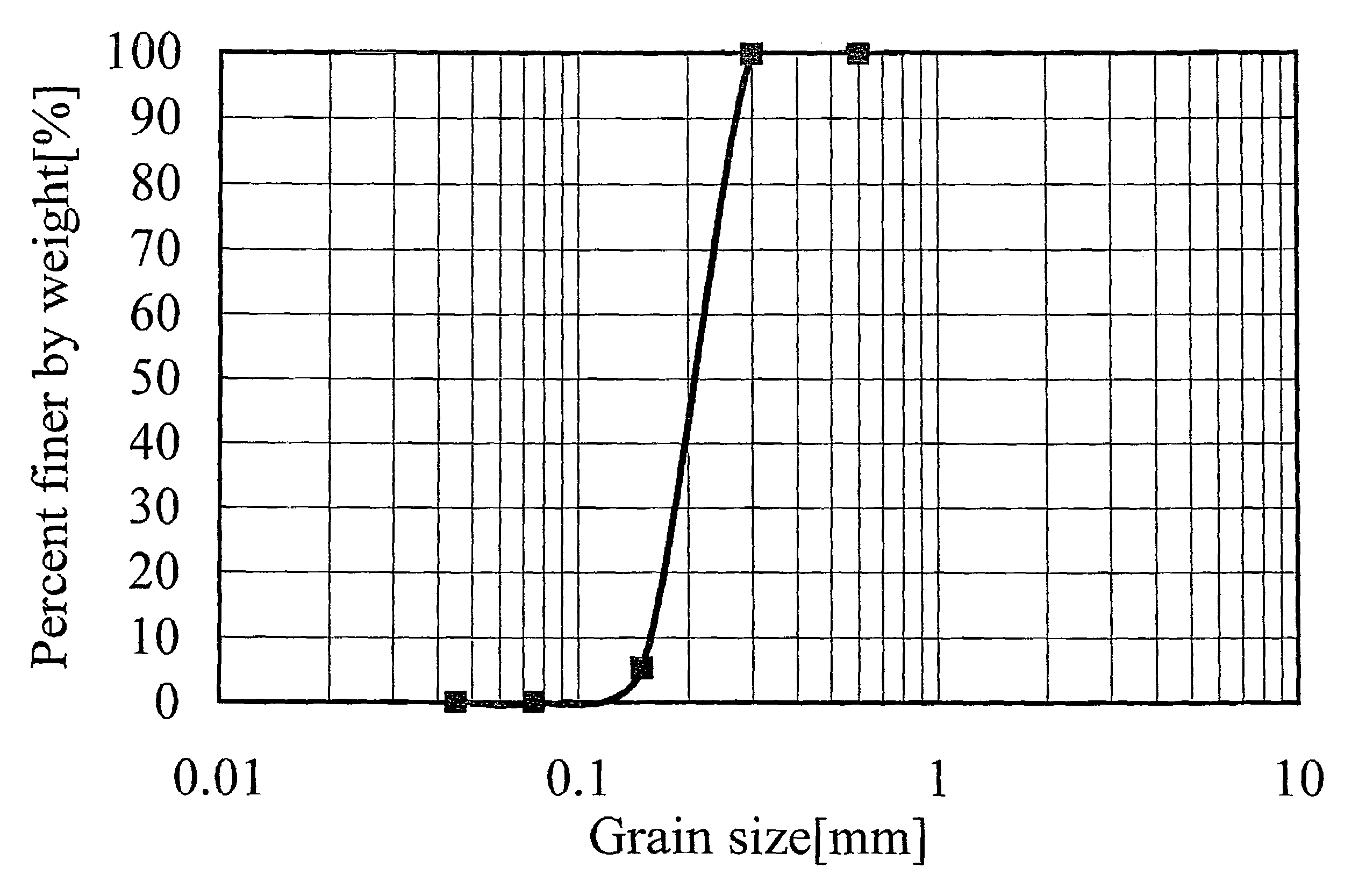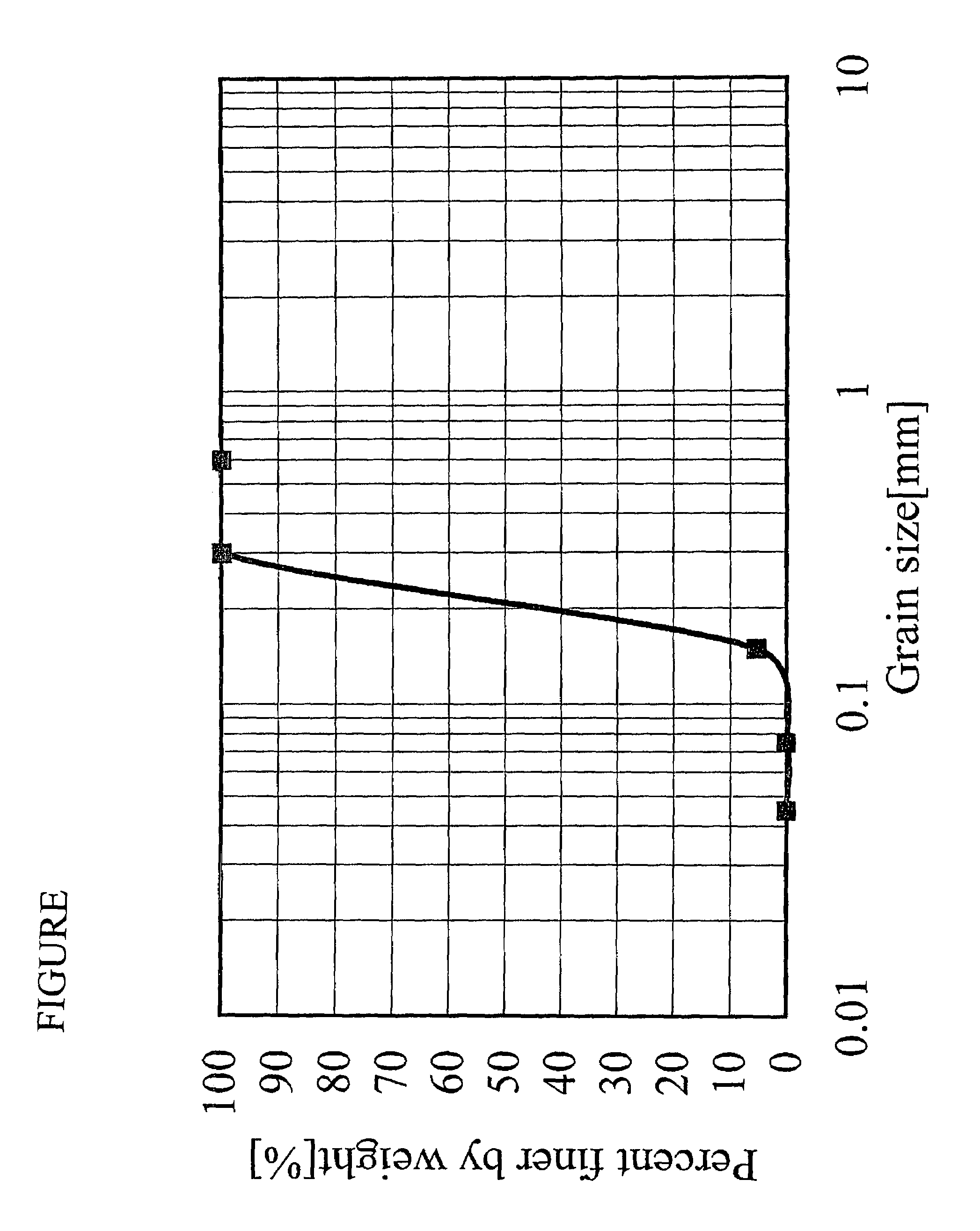Purifying agent for purifying soil or ground water, process for producing the same, and method for purifying soil or ground water using the same
a technology of purifying agent and soil, which is applied in the direction of water softening, treatment using complex/solubilising chemicals, other chemical processes, etc., can solve the problems of inconvenient establishment of effective pcb treatment methods, production and use of dioxins having an extremely high toxicity to human bodies even in a trace amount, etc., and achieves continuous and economical manner, efficient
- Summary
- Abstract
- Description
- Claims
- Application Information
AI Technical Summary
Benefits of technology
Problems solved by technology
Method used
Image
Examples
examples
[0140]The present invention is described in more detail by Examples, but the Examples are only illustrative and, therefore, not intended to limit the scope of the present invention.
[0141]Various properties were measured by the following methods.
[0142](1) The average major axis diameter and the aspect ratio of goethite particles were measured from a transmission electron micrograph thereof. The average particle diameters of hematite particles and iron composite particles were measured from a scanning electron micrograph thereof.
[0143](2) The Fe and Al contents in the iron composite particles were measured using an inductively coupled high-frequency plasma atomic emission spectroscope “SPS-4000” manufactured by Seiko Denshi Kogyo Co., Ltd.
[0144](3) The S content of the respective particles was measured using “Carbon and Sulfur Analyzer EMIA-2200” manufactured by Horiba Seisakusho Co., Ltd.
[0145](4) The crystal phase of the respective particles was identified by measuring a crystal str...
production example
Goethite particles 1:
[0171]A reaction vessel maintained under a non-oxidative atmosphere by flowing N2 gas at a rate of 3.4 cm / s, was charged with 704 L of a 1.16 mol / L Na2CO3 aqueous solution, and then with 296 L of an aqueous ferrous sulfate solution containing 1.35 mol / L of Fe2+ (amount of Na2CO3: 2.0 equivalents per equivalent of Fe), and the contents in the reaction vessel were mixed and reacted with each other at 47° C. to produce FeCO3.
[0172]Successively, the aqueous solution containing the thus obtained FeCO3 was held at 47° C. for 70 min while blowing N2 gas thereinto at a rate of 3.4 cm / s. Thereafter, air was passed through the FeCO3-containing aqueous solution at 47° C. and a flow rate of 2.8 cm / s for 5.0 hours, thereby producing goethite particles. Meanwhile, it was confirmed that the pH value of the aqueous solution during the air passage was maintained at 8.5 to 9.5.
[0173]The water suspension containing the thus obtained goethite particles was mixed with 20 L of an aqu...
example 1
[0195]The water suspension containing the above obtained Iron Composite Particles 1 (solid content of the iron composite particles: 8.0 g / L) was mixed with sodium polyaspartate (tradename: “Baypure DS100” produced by Bayer Chemicals AG) such that the solid content thereof was 1.3 g / L. Next, the obtained water suspension was stirred at a rotating speed of 3600 rpm for 30 min using a medium-speed rotation type stirrer “0.2 kW-powered T.K. Homodisper 2.5 Model” with 40 mmφ edged turbine blades (manufactured by Tokushu Kika Kogyo Co., Ltd.). Further, the water suspension was dispersed at a rotating speed of 4000 rpm using a continuous shear type dispersing apparatus “0.55 kW-powered T.K. Homomic Line Mill PL-SL Model” manufactured by Tokushu Kika Kogyo Co., Ltd., thereby obtaining a purifying agent.
PUM
| Property | Measurement | Unit |
|---|---|---|
| average particle diameter | aaaaa | aaaaa |
| particle diameter | aaaaa | aaaaa |
| particle diameter | aaaaa | aaaaa |
Abstract
Description
Claims
Application Information
 Login to View More
Login to View More - R&D
- Intellectual Property
- Life Sciences
- Materials
- Tech Scout
- Unparalleled Data Quality
- Higher Quality Content
- 60% Fewer Hallucinations
Browse by: Latest US Patents, China's latest patents, Technical Efficacy Thesaurus, Application Domain, Technology Topic, Popular Technical Reports.
© 2025 PatSnap. All rights reserved.Legal|Privacy policy|Modern Slavery Act Transparency Statement|Sitemap|About US| Contact US: help@patsnap.com


